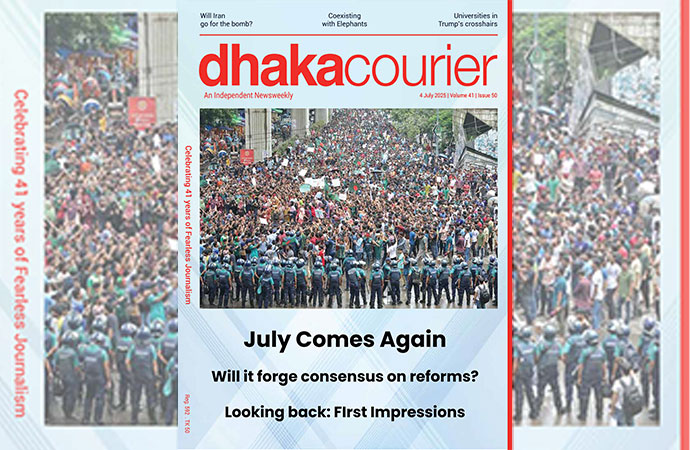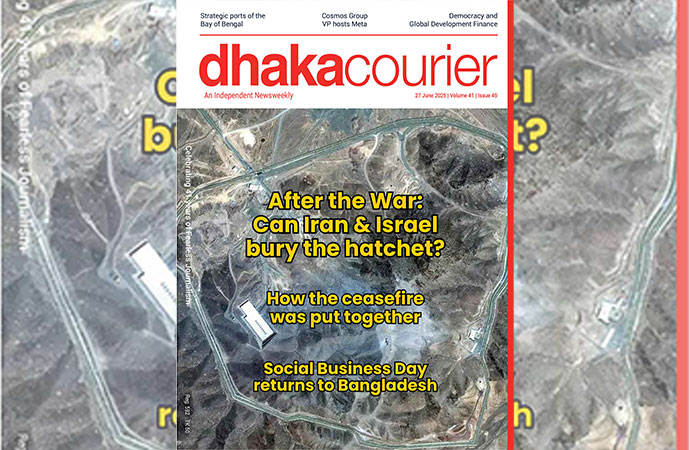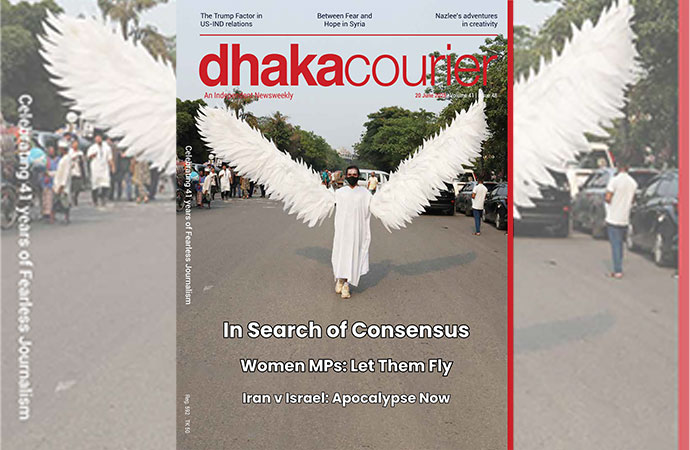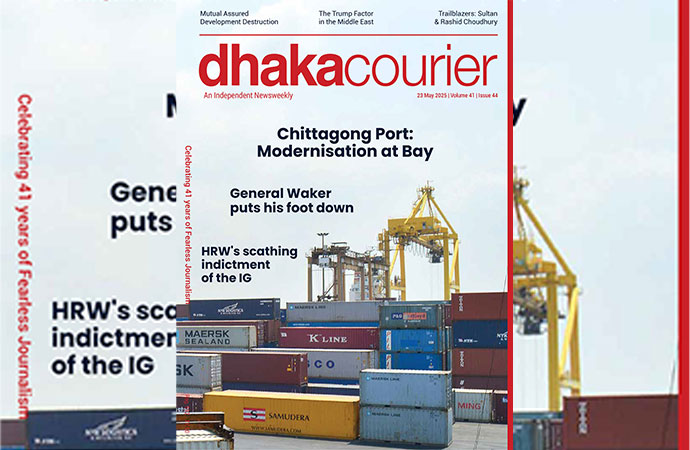Society

A tannery in Fes, Morocco. | Catherine Poh Huay Tan/Flickr. Creative Commons (by)
The Palermo Protocol triggered a long debate around what constitutes exploitation and trafficking, but what we need now is a plan for system-wide change.
Exploitation is at the heart of the definition of the crime of human trafficking in the United Nation's 2000 Palermo Trafficking Protocol. During the drafting process the most contentious issue was whether exploitation is inherent to prostitution, and thus whether prostitution is exploitative even when direct coercion is absent. Since it was hard to reach a clear position, a diplomatic compromise was reached by giving exploitation both a broad and an ambiguous definition.
Exploitation is one of the three constituting elements of human trafficking under the protocol. It states that "exploitation shall include, at a minimum, the exploitation of the prostitution of others or other forms of sexual exploitation, forced labour or services, slavery or practices similar to slavery, servitude or the removal of organs." The addition of other, 'non-sexual' forms of exploitation to the definition of human trafficking broke the immediate political logjam, but the meaning of exploitation remains profoundly contested on economic, moral, political, and legal grounds. The explicit reference to forced labour in particular has provoked a lively debate about what kinds of practices and conditions amount to labour exploitation both within and beyond the context of human trafficking.
This debate is important because how we frame or conceptualise labour exploitation shapes the strategies and policies that we devise to deal with it. At the same time, we need to prevent ourselves from getting so mired in nuance that we forget why we are trying to define exploitation in the first place. If the goal is to eradicate labour exploitation, carving out its most extreme forms and criminalising them cannot be the solution. Instead, we need a strategic approach to addressing labour exploitation, one which identifies the relationship between different forms of exploitation and their drivers and, on that basis, develops the capacities of local actors to make sustainable, system-wide changes.
What is exploitation?
There are two very broad ways of understanding exploitation. One sees it in terms of 'wrongful use' - a person is used simply as a means by another and thus is objectified and instrumentalised inappropriately. This is why some feminists object to even consensual prostitution. The other way regards exploitation in terms of disparity of value, such as when a person takes advantage of their superior bargaining position by under-compensating another person. Here we can think of the legions of zero-hour contract workers in the UK. Treated as independent contractors, many earn less than the minimum wage even while the large retailers benefitting from their labour make record profits.
The first understanding is associated with liberal political theory and it is concerned with identifying the categories of wrongful use of one individual by another. The latter comes from the Marxist tradition, and focuses on the structural features that enable certain individuals to do things like pay others less than the value of their labour. The challenge for the first approach is to identify what counts as wrongful use, whereas for the second it is identifying what constitutes unequal value.
Traces of this philosophical debate can be discerned in contemporary policy discussions of what constitutes labour exploitation. Historically, the leading organisation on labour rights, the International Labour Organization (ILO), has shied away from using the term exploitation because in the context of labour markets it has typically referred to poor outcomes like very low wages. Instead, the ILO has focused on coercive means. This approach aligns with the ILO's definition of forced labour, which is "all work or service which is exacted from any person under the threat of a penalty and for which the person has not offered himself or herself voluntarily." Although the ILO interprets coercion broadly to include physical, psychological, and financial manifestations, its Committee of Experts is clear that "the employer and the state are not accountable for all external constraints or indirect coercion existing in practice: for example, the need to earn one's living."
Similarly, a discussion paper prepared for the World Bank distinguishes between "consensual exploitation" and "non-consensual exploitation", with the latter including unfree forms of labour such as forced labour, human trafficking, and slavery. The paper's authors recognise that individuals may, in certain contexts, allow themselves to be exploited. However, for them such situations are limited to when the potential labour pool is so large that a dominant employer enjoys vastly superior bargaining power (known as monopsonistic markets). The ILO's and the World Bank's approaches track the liberal approach, where the problem is seen as wrongful use and typically involves some form of coercion, deceit, fraud, or abuse perpetrated by an individual. This approach does not take into account the background legal and economic arrangements that create fertile conditions for exploitation.
This can be contrasted with an influential policy paper by Klara Skrivankova, who focuses upon the kinds of constraints that contribute to exploitation beyond coercion and deception. For Skrivankova, exploitation can be regarded as the outcome of "external and individual circumstances" that include "legal framework, labour market functions and failures, crime, migration, individual agency and status". This approach links exploitation to regulation, the market, and status hierarchies by looking at how immigration and employment laws operate in specific sectors, such as agriculture and domestic work, to make groups of workers, such as women or racialised workers, vulnerable to exploitation. Skrivankova also popularised the idea of a continuum of exploitation that ranged from slavery and forced labour through to decent work.
Law and labour exploitation
Lawyers and legal researchers also argue over the 'best' interpretation of the meaning of exploitation. Initially, the debate arose in the context of the definition of human trafficking. Anne Gallagher, in an issue paper for the United Nations Office on Drugs and Crime, argues for understanding exploitation as a continuum and suggests that a "threshold of seriousness" may be needed "to prevent the inclusion of less serious forms of exploitation into the concept of trafficking in persons, such as labour law infractions that may be anyway subject to another legal regime."
For Gallagher the question is one of drawing the line between criminal forms of labour exploitation and those forms of labour abuse that are of a 'regulatory' nature. This approach to defining exploitation avoids what Janie Chuang calls "exploitation creep": the tendency to stretch the meaning of exploitation in the human trafficking protocol to capture an ever-broader range of practices. However, this approach effectively devolves the decision of where to set the bar for human trafficking to a state's pre-existing legal norms regarding the scope of criminal behaviour.
It also demonstrates how the law renders some workers vulnerable to exploitation. Virginia Mantouvalou, for example, has shown how immigration controls on temporary migrant workers, work programmes in prisons and immigration detainment centres, and legal tests of employment status for casual workers create contexts in which exploitation is ripe to occur. This focus on the role of the law in constructing structures of exploitation shifts our attention away from individual wrongdoers, which is the subject of criminal law, to state responsibility and the positive obligations on states to address conditions that give rise to exploitation.
The problem with a human rights approach like Mantouvalou's, however, is that to date binding positive duties on states to address labour exploitation in the context of trafficking have been limited to criminalisation and victim protection. So far human rights courts such as the European Court of Human Rights have not told their member states to provide legal pathways for migration or to enforce labour standards as part of their legal obligation to protect individuals from forced labour, slavery, and human trafficking.
Legislators and law enforcement officials continue to argue over whether or not coercion needs to be present for human trafficking to occur. One of the key points of contention is whether an employer who subjects workers to inhuman or degrading conditions, and who pays them well below the legal minimum or national average, can be convicted of the offence of human trafficking or forced labour. National approaches are currently mixed. The European Union's Agency for Fundamental Rights advocates addressing labour exploitation outside of the context of human trafficking and extending the definition of labour exploitation beyond coercion to include "particularly exploitative working conditions".
This approach is supported by the EU Employer Sanctions Directive. Designed to deter employers from hiring workers with irregular migration status, the sanctions directive requires member states to criminalise the conduct of employers who employ irregular workers in "particularly exploitative working conditions". This is defined in Article 2(1) as "working conditions, including those resulting from gender based or other discrimination, where there is a striking disproportion compared with the terms of employment of legally employed workers which, for example, affects workers' health and safety, and which offends against human dignity". Exploitative conditions are those that fail by a wide margin to meet the prevailing standards.
A strategic approach
These approaches to labour exploitation favour either a criminal law or a human rights lens. Both come with problems. The former is only concerned with individual culpability, while the second doesn't require enough of states to prevent exploitation by private actors. Both fail to grapple with how state immigration and labour policies combine with labour market institutions and actors to create a range of different types and degrees of labour exploitation. They instead invest a great deal of effort in establishing definitions and indicators for forms of severe exploitation, and the typical solution remains prosecution.
However, we know that using criminal law often backfires. It tends to harm the most vulnerable populations, and anti-trafficking and other criminal laws are often used as a cover for different agendas - such as demonising undocumented migrant workers in the UK. A more effective approach to addressing all forms of labour exploitation regardless of how it's defined is to tackle the state policies, business practices, and labour market actors associated with the avoidance and violation of basic labour standards.
Wage theft, which "can be conceived as an amalgamation of a number of different types of labour rights abuses related to the denial of remuneration or benefits to a worker to whom they are owed or entitled", is a perfect example of where a strategic approach is needed. Wage theft is one of the indicators of forced labour, although not all of its forms will amount to forced labour. We also know that migrant workers are particularly vulnerable to having their wages withheld and to unlawful wage deductions. One way of dealing with wage theft is to develop and enforce labour laws, such as the law in Brazil that holds contractors liable for the wage violations of subcontractors. The only way to tackle 'extreme' forms of labour exploitation is to see how they are tied up with other more mundane forms and to develop a strategic approach to regulating unacceptable forms of work.
A strategic approach to targeting labour exploitation goes beyond responding to particularly egregious examples by changing the conditions that produce them. Here, it is important to learn from local actors, especially affected workers and their representatives, who are familiar with local regulatory and institutional frameworks. Workers have been absent from most discussions on what forms of labour exploitation to target and how to go about doing so. They and their representative organisations - global, national, and local labour unions, worker-based human rights organisations, and other organisations that genuinely represent workers' interests - need to be central to efforts to create and implement any form of regulation, including its priorities, design, monitoring, and enforcement. Worker participation in the governance of labour standards is necessary to ensure that those in authority, whether corporate actors or state officials, can be held accountable.
Policies designed to end labour exploitation should identify points of leverage at which system-wide effects are most likely. These may be found on multiple levels, including geography, sector, and product market. However, they are not possible to predict in advance. Points of leverage must be identified within a particular locale or sector with the input of local labour market actors - workers, their representatives, employees, intermediaries and state officials. Finding effective leverage points is particularly important in contexts in which resources for addressing labour market disadvantage are profoundly constrained.
The transformation experienced in recent decades by load carriers in India provides a good example of this in action. Known as mathadi workers, this mostly male workforce migrates from the rural parts of the Indian state of Maharashtra to Mumbai and other urban centres in search of work. Initially their work was poorly paid and dangerous. It was controlled by middlemen, and workers were victimised and sometimes tortured. In 1974, legislation set up boards representing mathadi workers, labour users, and government officials, and these boards began to regulate the supply and demand for labour as well as the terms and conditions of employment. The result has been a remarkable improvement in mathadi workers' wages, conditions, and social protection, as well as the elimination of the most egregious forms of exploitation.
A key goal of strategic regulation against labour exploitation should be to build capacities and assist labour market actors to internalise norms, thereby ensuring the sustainability of regulatory interventions. A critical dimension of any strategy to combat labour exploitation is to cultivate effective worker voice and power. The idea that labour exploitation is perpetrated by a few bad actors distracts us from all the ways that labour exploitation is a by-product of contemporary business practices, labour market institutions, and immigration policies. Until we design a new strategy based on the realisation that labour exploitation is part and parcel of the dominant business model not much will change.
From openDemocracy

























Leave a Comment
Recent Posts
Harrowing stories of rescue em ...
In the frantic hours after a wall of water engulfed camps and homes in ...
On the chin: Trump’s tariff a ...
The 90-day pause on Donald Trump’s radical restructuring of Amer ...
Reimagining the OST: ‘Utshob’ is an ode to the 90s, ..
‘Married to Journalism’: Adieu to Shamim Ahmad
The High Court released the full text of its judgmen ..
Chipmaker Nvidia became the first public company to ..